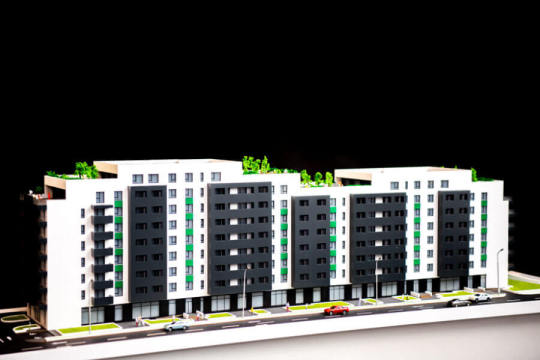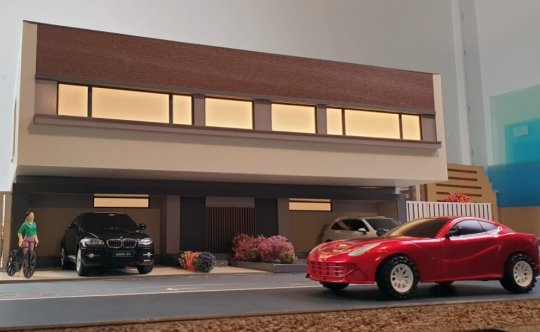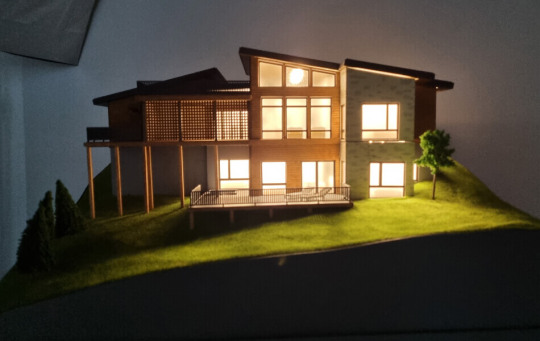Don't wanna be here? Send us removal request.
Text
Presentation and display models
In a world where digital simulations dominate, there’s an enduring charm and significance in the tactile, physical representations of ideas—the scale model. These miniature replicas serve as powerful tools, transcending the limitations of screens to bring concepts to life in three dimensions.
From architecture and engineering to product design and urban planning, the art of crafting presentation and display scale models continues to hold sway, captivating imaginations and conveying intricate details with precision.

Architectural scale models are more than mere replicas, they’re storytellers in physical form. They evoke emotions, elucidate complex designs, and offer tangible insights into future projects. Architects, designers, engineers, and artists harness the potential of scale models to communicate their visions effectively, whether it’s for a towering skyscraper, an innovative product, or an expansive urban development.
Precision and detail:
The essence of a scale model lies in its accuracy and attention to detail. Every minute facet, from the texture of materials to the placement of structural elements, is meticulously replicated. Modern technologies like 3D printing and laser cutting have revolutionized the precision achievable in these models, allowing for unparalleled intricacy and realism.

Communicating
In fields like architecture and urban planning, where blueprints and digital renderings often fall short, scale models serve as indispensable communication tools. They allow stakeholders to grasp the spatial relationships, understand the flow of design, and visualize the end product in a tangible and accessible manner. These models facilitate discussions, streamline decision-making, and bridge the gap between abstract concepts and concrete understanding.
Evolving techniques:
Advancements in materials and techniques continually push the boundaries of scale model craftsmanship. From traditional handcrafted models using wood, cardboard, and foam to incorporating cutting-edge technologies like augmented reality and interactive elements, the spectrum of possibilities has expanded exponentially. Incorporating lighting, movable parts, or interactive elements elevates these models, transforming them into immersive experiences.

Future perspectives:
The future of scale models appears promising, with a blend of traditional craftsmanship and cutting-edge technology shaping its trajectory. Augmented reality, virtual reality, and interactive elements will likely further augment the immersive experience of these models. Moreover, the integration of artificial intelligence could streamline the model-making process, enhancing efficiency without compromising precision.
In an era inundated with digital visualizations, the enduring relevance and charm of presentation and display scale models persist. They serve as ambassadors of creativity, precision, and communication, embodying intricate visions and transforming them into tangible, awe-inspiring realities.
Whether adorning exhibition halls or standing as testament to artistic craftsmanship, scale models continue to captivate, inspire, and bridge the gap between imagination and reality.
0 notes
Text
Architectural Models and Uses
Architectural models have found applications in a wide range of fields, enhancing the way we learn and interact with various subjects. Here are a few notable examples:
Education: Interactive scale models offer an engaging and immersive learning experience. Students can explore historical events, architectural designs, and scientific concepts in a hands-on way, making education more exciting and effective.

Architecture and Urban Planning: Architects can use scale models to take virtual tours of their designs, gaining a better understanding of scale and spatial relationships. Urban planners can simulate and assess the impact of infrastructure projects on a city's layout.
Museums and Exhibits: Museums are increasingly using interactive scale models to captivate visitors. Historical dioramas, AR-enhanced exhibits, and 3D-printed artifacts can make the past come alive, providing a rich and interactive learning experience.
Entertainment and Hobbies: Scale model enthusiasts can create dynamic and interactive miniature landscapes for model train layouts, tabletop war games, and more. These models can incorporate lighting, sound, and motion to create a highly immersive experience.

Understanding Scale Models
Architectural models are physical or digital representations of real-world objects, structures, or environments, built to a smaller proportion of the original. These models serve as tools to aid visualization, analysis, and education.
They are employed in various fields, such as architecture, engineering, museums, and hobbies, to convey intricate details and facilitate comprehension. Scale models can range from architectural models of buildings to miniature train layouts and dioramas of historical battles, and much more.

Challenges and Future Prospects
While interactive scale models offer a wealth of opportunities, they are not without their challenges. The integration of technology can be costly and require specialized knowledge.
The hardware, such as VR headsets and 3D printers, can also be expensive, limiting accessibility. Additionally, data privacy and security issues must be addressed when using augmented reality in public spaces.
The future of interactive scale models is promising, with ongoing advancements in technology and increased accessibility. As costs decrease and user-friendly tools become more widespread, we can expect to see even more innovative applications and a broader user base.

Conclusion
Architectural models have opened up new avenues for learning, exploration, and engagement with our world. Whether in the classroom, the architectural studio, or the museum, these interactive models provide a dynamic, immersive, and personalized approach to understanding and appreciating our surroundings.
As technology continues to evolve, so too will the possibilities and applications of interactive scale models, enriching our understanding of the world in exciting and unexpected ways.
1 note
·
View note
Text
Architectural Models for Real Estate
Architectural models are indispensable tools in the real estate industry, playing a pivotal role in showcasing properties to prospective buyers, investors, and stakeholders.
These physical representations of buildings and developments provide a tangible and immersive experience, allowing people to visualize and appreciate the design, layout, and aesthetics of real estate projects. In this article, we will explore the importance and utility of architectural models in the real estate sector.

The Power of Visualization
Real estate transactions are not just about bricks and mortar; they involve emotions and aspirations. Buyers and investors often seek more than floor plans and blueprints. They want to see, touch, and feel the property. Architectural models bridge the gap between abstract ideas and concrete realities, offering a powerful tool for visualizing and connecting with the potential of a property.
Architectural models serve several critical functions in the real estate world:
Design Assessment: Developers and architects can use architectural models to assess the aesthetics and functionality of a project before it’s built, helping them identify design flaws and make necessary adjustments.
Marketing and Sales: For real estate agents and developers, models are invaluable in marketing properties. They serve as compelling sales tools, enabling clients to understand the spatial layout, interior design, and exterior features.
Investor Presentations: When presenting a real estate investment opportunity to potential investors, an architectural model can make a persuasive case. It provides a clear and concise overview of the project’s potential and value.
Community Engagement: In larger real estate developments, such as residential neighborhoods or commercial complexes, models can be used to engage with local communities. These models help residents and stakeholders understand the scope of the project and its impact on the area.

Types of Architectural Models
There are several types of architectural models that serve various purposes in real estate:
Site Models: These models provide an overview of the entire property or development site, often including surrounding infrastructure, landscaping, and environmental features.
Scale Models: Scale models represent the building or development at a specific scale, allowing for detailed examination of its design and layout.
Interior Models: These models focus exclusively on the interior spaces, showcasing room layouts, furniture, and decor to help buyers envision the living or working environment.
Concept Models: Concept models are often used in the early stages of a project to visualize design ideas and spatial arrangements before they are finalized.

In the world of real estate, architectural models are not merely static representations; they are dynamic sales and marketing tools. They empower stakeholders to see and experience properties, turning abstract plans into tangible visions.
As the real estate industry continues to evolve, architectural models, whether physical or digital, will remain an essential asset in the process of bringing properties to life and helping buyers and investors make informed decisions.
0 notes
Text
Architectural Model Making
As an architect, you must be struggling to utilize your skills to search for the latest and innovative designs. You can present your models, urban designs, and interior designing projects with great feasibility. You can convey your thoughts physically to others, and there would be no trouble in detailing the mind-blowing ideas with impressive skills.

A 3D architectural model shows what a building will look like, from all perspectives. This makes it useful for casual observers, for those who want to buy an apartment in a residential building or for investors in large chains of buildings. Basically, these customers will interact better with the future construction, when they have an architectural model.
Even in public media and public-private partnerships, architectural models help those involved to approve a project, to present a cause, to convince the media to promote a project.
The architectural model presents clearly and precisely the purpose of your business, the potential optimization methods in order to increase the productivity rate, but it can also indicate the impact of subsequent changes.
The use of an architectural model in the construction, consolidation or restoration phase is useful in choosing the best material options, but also in determining the necessary budget to implement the dream project. At the same time, when restoring a construction or consolidating it, we can notice the way in which the new change will influence its durability and safety.
Architectural models can contribute to increasing the efficiency of a business and to restoring the company’s impact on the market, ultimately influencing the evolution of the number of sales. You will find out in this article how you can use this benefit.
2 notes
·
View notes